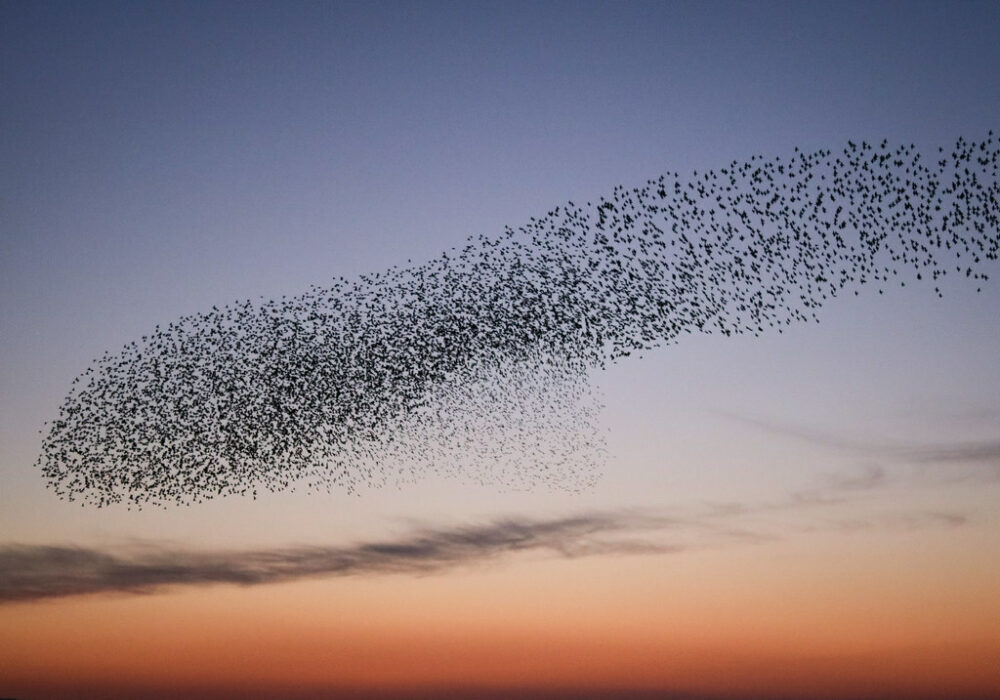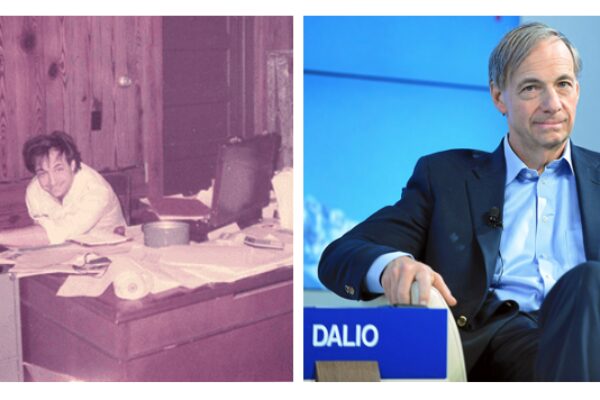
In the higher levels of the game of work, we are presented with a question:
How can we grow into powers we don’t yet have...
… so that we can accomplish goals currently far beyond our reach…
… and experience, in the course of this reaching and becoming, joy in our unfolding days and a sense of wholeness in our accumulating years?
Time is the medium in which this question must be answered.
Too often, the cycles by which we manage organizations and structure our work numb us and deaden us, even as they propel us forward. As Emily Dickinson wrote (#372):
The Feet, mechanical, go round –
A Wooden way
Of Ground, or Air, or Ought –
Regardless grown,
A Quartz contentment, like a stone –
The alternative – that which we must do in order for our organizations to make us more alive – is to give the year a shape, creating rhythms and rituals that bring our attention to what matters, each important thing held in its container of time.
Sit at the table with any family and ask them what they do, season by season; ask them to describe their traditions.
We always go sledding the day of the first big snowfall.
Just when spring is turning, we drive out from the city and hike by the river as the buds begin to form.
In early April, when the farmers lay out bunches of ramps on their tables, here’s what we make.
During the weekend we do spring cleaning, we pick one piece of art each child has made at school and put it in a frame.
Look closely at these rhythms and rituals: you will see what the family holds dear; you will see their values made manifest.
A string of moments, looped through the years, fastens us to one another – and fastens us to ourselves. If this string of moments is elevating, we feel held and grounded, even as we lean forward into the new – like a child who feels the crispness of fall air, the weight of new notebooks on her back, and the butterflies that come from walking into a new class as part of the larger world that opens with each grade. Unwelcome repetition makes a fetter out of time.
In 2023, our tenth year, we at Incandescent decided we needed to attend more deeply to the shape of our year.
We have always been intentional about rhythms, particularly about how we connect the long arc of our vision to where we’re focused here and now.
Moving through recurring processes without the higher, more expressive moments of ritual risks letting the years unfold like music that’s all rhythm and no melody.
What organizations need from ritual is:
- Connection to the organization’s deepest values and commitments – rituals are expressions of what matters most
- A powerful shared experience in which the underlying message isn’t simply said, but is, most of all, felt
- A design that enables a blend of repetition and renewal, such that people internalize the power of what’s the same each year and connect the ritual to what matters now
- The ways to meet the need should be as wildly various as the commitments, cultures, and styles of organizations themselves.
One of the core ideas running through the design we arrived at for Incandescent is to observe the birthdays of people who exemplify qualities central to our worldview as a firm and to use these occasions as opportunities to deepen our connection to those specific qualities as well as our connection to one another. We chose Virginia Woolf’s birthday, January 25, as our day to reflect on this design before beginning and as our day to reflect on the first year of the cycle we put into place. This felt fitting, given how much care Woolf gave to the question of what to pay attention to and what kind of attention to pay. For instance, here, Woolf is near the beginning of her essay “How Should One Read a Book?”:
We must not squander our powers, helplessly and ignorantly, squirting half the house in order to water a single rosebush; we must train them, exactly and powerfully, here on the very spot. This, it may be, is one of the first difficulties that faces us in a library. What is “the very spot”? There may well seem to be nothing but a conglomeration and huddle of confusion. Poems and novels, histories and memoirs, dictionaries and blue-books; books written in all languages by men and women of all tempers, races, and ages jostle each other on the self. And outside the donkey brays, the women gossip at the pump, the colts gallop across the fields. Where are we to begin? How are we to bring order into this multitudinous chaos and so get the deepest and widest pleasure from what we read?
Replace the question of reading with the question of how we spend our lives at work, and the same opportunities and dilemmas are there in front of us: what is “the very spot” of what deserves our attention now, and what is the highest and best form of attention we can give it?
What does it practically mean to design shared experiences in which an organization's commitments are not only voiced but felt experiences that can be repeated again and again, while feeling new each time?
At Incandescent, we’ve articulated four fundamental commitments, each an intrinsic value not reducible to the others: Discovery, Impact, Community and Economic Value. A big part of what we mean by Community is to have as much of our work as possible happen in the flow of enduring, meaningful relationships, animated by a sense of mutuality that’s grounded not just in shared interest but in shared values and in taking pleasure from one another’s company. We’ve thought very carefully about how we develop these relationships, and we believe what’s at stake is not only the growth of our business but the quality of our lives.
How do we connect this commitment to the shape of a year? At the end of each year, we partner with an artist to create a holiday package telling the story of something happening at a small, human scale that we believe matters to us all. We make a donation in support of that work, and we share the story with several hundred of our closest friends, clients and collaborators. This ritual focuses us on the web of many relationships that runs through our work, and early in the new year, we think about how to cultivate these many relationships well. As winter makes way for spring, our business focus shifts from the vibrant many to the critical few. We ask questions like:
- What are the most important partnerships we need to focus on this year?
- How do we build the long-term journeys we aspire to with new clients and how do we realize our aspirations for the journeys that we’re on?
- How do we ensure we’re focused not just on “getting hired” but on hiring the work we’re doing to have the greatest impact on our clients and on building Incandescent?
These questions could simply be a prompt to ensure we have solid account plans in place, but last year we asked how we could connect these questions to a powerful observance of ritual.
We chose to call the first Friday in April “Relationship Day” and chose that day to observe the birthday of the late Wangari Maathai, founder of the Green Belt Movement in Kenya and winner of the 2004 Nobel Peace Prize. Maathai organized women on a vast scale to plant trees, creating a campaign that built social capital and capacity for collective action through the direct, patient, and sustained focus on restoring degraded land. For us, Maathai’s life work is not only a reminder of the qualities that matter in building relationships but of the kinds of people we most care about building relationships with: people who are “on a quest,” passionately pursuing deep conviction about how they can make a difference.
All that is simply a frame, an opening to the question of how to translate these thoughts into a powerful experience. Here’s what we decided as a team:
One of our most deeply held beliefs at Incandescent is in the power of even small actions, sustained over very long periods of time. We take Jean Giono’s The Man Who Planted Trees to be a touchstone story that brings this principle to life. Wangari Maathai’s life work exemplified this ideal.
Each year on her birthday, each team member who has been at Incandescent for at least a year has the opportunity to give $1,000 of the firm’s money to support an individual’s work that in some way exemplifies this power of sustained action. The funds can go to a 501c3 organization, or they can fund an individual through some other vehicle (e.g., as income to an individual who has not incorporated a non-profit). The social contract around this giving is that we commit not only to making a financial donation but to finding ongoing ways of being an amplifier and supporter and to sharing news and learnings from their work with others in the firm.
On the Thursday evening before our Friday Relationship Day, we will have a dinner for the full firm, and at that dinner, everyone who has made one of these gifts tells the story of the person they’ve supported and what inspired them about this person’s work.
There are several points to make explicit about the way of thinking behind this design:
- It creates a context for each member of the firm to think about this observance well in advance of the dinner itself, asking themselves whose work deserves their support
- It makes team members authors of our firm observance, not passive participants
- By telling the stories of our gifts and why we made them the evening before Relationship Day, we begin from a place as seeing our attention as being in service of work that matters – the opposite mindset from many meetings focused on relationships and accounts that get trapped in the self-mindset of narrow focus on how to generate revenue
- By giving the opportunity to make a gift to any firm member who has been with the firm long through at least the cycle of a single year, we communicate, in a tangible way, that building relationships is everyone’s work, not just the work of partners or of people with primarily client-facing roles
- By creating the norm of being continuing supporters and amplifiers of the work we’ve given to, we build over time a tapestry of stories that members of the firm feel part of, a tangible manifestation of our work being vastly larger than ourselves
- While the form of this event is evergreen – eventually, as the firm grows, we’ll simply share in smaller groups the story of the gifts we’ve made – the stories themselves are always new, connected to what matters to each of us right now
For my own gift last year, I asked the advice of Françoise Girard, herself a woman on a quest. After a long career as a leader in non-profits and philanthropy, Françoise is dedicating this chapter of her life’s work to building Feminism Makes Us Smarter as a platform for lifting feminist voices from around the world. I described what mattered to us about Wangari Maathai’s work and asked for her thoughts about an emerging Kenyan leader who could benefit from additional support. She introduced us to Rachael Mwikali, founder of Coalition for Grassroots Human Rights Defenders. I felt a sense of connection to Rachael’s work due to the year I’d spent working on how human-centered design could be applied at a greater scale to address barriers to adolescent sexual and reproductive health across Africa. That work led to the formation and funding of the HCD Exchange. While our small donation is a mere drop in the ocean of her large work to fight systemic injustice, the impact of the repetition of these small acts of attention and gratitude on our own culture will be enormous. Hopefully, we will also make some small difference on the outside as we derive such a great benefit on the inside.
As we learn from our own experience, we are increasingly asking parallel questions in our work. In the context of executing strategy, building a culture or creating a leadership team, few questions have greater leverage than:
How can we be most intentional about how we use the shape of our years, as well as the rhythms of our quarters, months and weeks, to place our collective attention on what we care about most?
Attention and energy are the currency through which we most directly express what we value. Our lives will be fuller and our work will be deeper and better to the extent that we – to borrow Abraham Heschel’s words from The Sabbath – “learn how to consecrate sanctuaries that emerge from the magnificent stream of the year.” Every organization articulates aspirations and values; few create sanctuaries that remind us how to honor them. To choose the shape of our years – and the rhythms of the quarter, the month, the week, the day – is to fashion a needle that grasps the thread of whatever we take to matter most, so that we can pull it through the fabric of our lives.
Image by Tanya Hart



